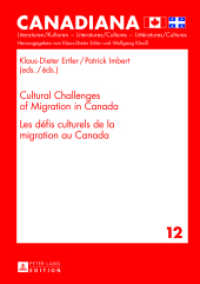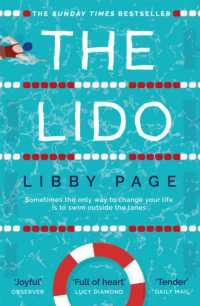- ホーム
- > 洋書
- > 英文書
- > History / World
Full Description
Oil and Urbanization on the Pacific Coast tells the story of oilman Ralph Bramel Lloyd, a small business owner who drove the development of one of America's largest oil fields. Lloyd invested his petroleum earnings in commercial real estate—much of it centered around automobiles and the fuel they require—in several western cities, notably Portland, Oregon. Putting the history of extractive industry in dialogue with the history of urban development, Michael R. Adamson shows how energy is woven into the fabric of modern life, and how the "energy capital" of Los Angeles exerted far-flung influence in the US West.
A contribution to the relatively understudied history of small businesses in the United States, Oil and Urbanization on the Pacific Coast explores issues of interest to multiple audiences, such as the competition for influence over urban development waged among local growth machines and outside corporate interests; the urban rivalries of a region; the importance of public capital in mobilizing the commercial real estate sector during the Great Depression and World War II; and the relationships among owners, architects, and contractors in the execution of commercial building projects.
Contents
List of Figures
List of Tables
Acknowledgments
List of Abbreviations
Introduction: The Role of the Independent Oil Operator
1. Developing the Ventura Avenue Field
2. Local Elites, Outside Companies, and Ventura's Oil Boom
3. Making Portland a Wonderful City
4. False Start: Ralph Lloyd's East Side Dream Falls Short
5. The Lloyd Corporation Becomes an Independent Operator
6. Depression-Era Commercial Real Estate Development and Management
7. Public Capital and the Development of Portland's East Side
8. The Suburbanization of Urban Space: The Lloyd Center
Conclusion
Collections
Notes
Index








